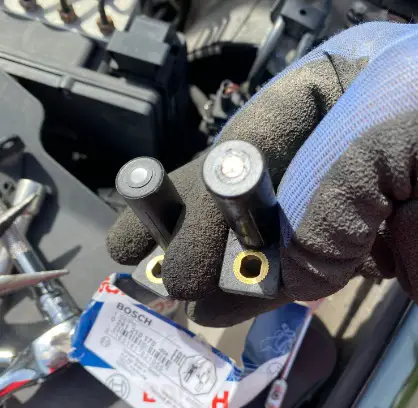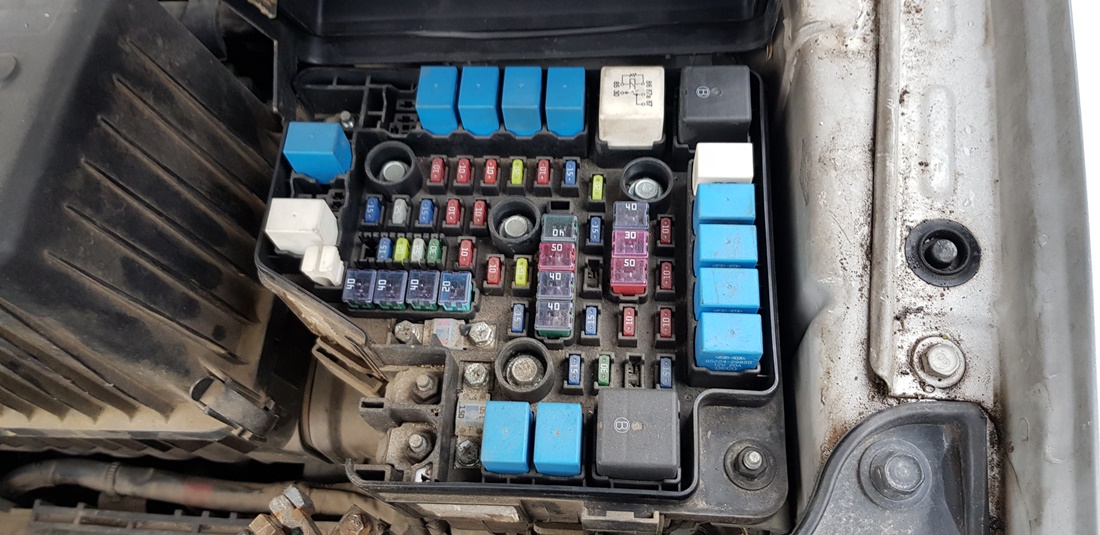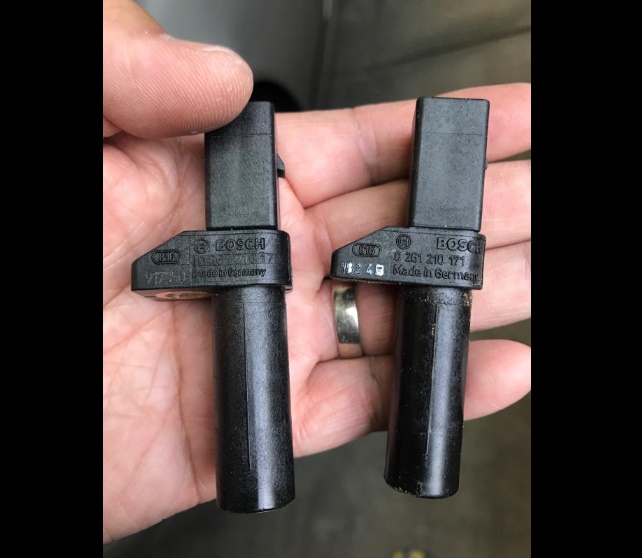How long it takes to charge a car battery with jumper cables depends on the condition of the battery and the amount of power being delivered by the jumper cables.
In this blog post, we will discuss what factors affect how long it takes to charge a car battery with jumper cables.
We will also provide some tips for charging a car battery with jumper cables quickly and efficiently!
- Key Takeaway
- How Long Does It Take To Charge a Car Battery With Jumper Cables?
- How Long Should I Let My Car Charge After Jump?
- Can You Fully Charge a Car Battery With Jumper Cables?
- How Long Does It Take To Charge a Car Battery While Idling
- How Long Should a Car Run To Charge Battery In Cold Weather?
- How Many Times Can a Car Battery Be Recharged?
- How Long Can a Car Battery Be Dead And Still Be Recharged
- FAQs
- Q: What precautions should I take while using jumper cables?
- Q: Is it necessary to turn off the engine of the charged car while using jumper cables?
- Q: What happens if I connect the jumper cables incorrectly?
- Q: Can I jump-start my car if the battery is completely dead?
- Q: Can I use a different type of vehicle to jump-start my car?
- Q: Can I leave the jumper cables connected after starting my car?
- Q: What if my car does not start even after using jumper cables?
- Conclusion and final thoughts
Key Takeaway
- It can take anywhere between five and twenty minutes to charge a car battery with jumper cables enough so you can start the vehicle.
- After starting the vehicle with jumper cables, make sure you let the vehicle run for about thirty minutes to charge the battery.
- Technically, you can charge a car battery with jumper cables, but it will take around 24 hours to fully charge it.
- It can take up to thirty minutes to charge a battery with jumper cables if the vehicle is just idling.
- It takes a vehicle an hour to run to charge the battery in cold weather.
- A car battery can be recharged 500 times before it needs to be replaced.
How Long It Takes To Charge a Car Battery With Jumper Cables

Charging a car battery with jumper cables typically involves jump-starting the car and then running it for about 15-30 minutes to allow the alternator to recharge the battery.
While jump-starting a car with jumper cables provides enough charge to get the engine running, it does not fully charge the battery.
The alternator, which is designed to maintain a battery’s charge, not replenish it from a dead state, then takes over. This process usually takes about 15-30 minutes of driving, depending on the vehicle and the condition of the battery.
As a mechanic, I’ve often had to explain that it’s not really the jumper cables that charge the battery. They merely provide enough energy to start the engine. Once the engine is running, the alternator takes over and begins to recharge the battery.
However, if the battery is significantly discharged, running the engine may not be enough to fully restore its charge. It’s also important to note that regular deep discharges can shorten the lifespan of the battery.
In my experience, if a battery is regularly dying and needing jump-starts, it might be time to have the battery and charging system inspected.
A healthy battery should be able to hold a charge, and a functioning alternator should be able to keep it topped up. If either of these components isn’t doing its job, it could lead to repeated instances of a dead battery.
So, while jumper cables can be a quick fix to get you back on the road, they aren’t a long-term solution for a battery that won’t hold a charge. For that, you’ll likely need the help of a professional to diagnose and address the underlying issue.
How Long Should I Let My Car Charge After Jump?

After a jump start, you should let your car run for at least 20 to 30 minutes to allow the alternator to recharge the battery.
Jump-starting your car only provides enough charge to start the engine. Once the engine is running, the alternator takes over and begins recharging the battery.
It generally takes about 20 to 30 minutes of driving for the alternator to sufficiently recharge the battery. However, the exact time can vary depending on the age and condition of your battery, as well as the power requirements of your vehicle.
From my perspective as a mechanic, I often see people mistakenly believe that a quick five-minute drive will recharge their battery after a jump start. Based on my experience, this is rarely sufficient.
I remember one customer in particular who had to jump-start his car every morning because he only drove short distances each day and the battery never had a chance to recharge fully. I advised him to let the car run for longer periods, and this seemed to resolve the issue.
However, it’s important to note that if you’re frequently needing to jump-start your car, it could indicate a problem with the battery or the charging system. It’s best to have your vehicle inspected by a professional to identify and fix any underlying issues.
Can You Fully Charge a Car Battery With Jumper Cables?

Jumper cables are not designed to fully charge a car battery; they are used to transfer power from a functional battery to a dead one to get the vehicle started, after which the car’s alternator should recharge the battery.
The role of jumper cables is essentially to provide a jump start, giving enough energy to the dead battery so that the engine can be started. Once the engine is running, the vehicle’s alternator will take over the task of recharging the battery.
This process could take anywhere from 20 minutes to several hours of driving, depending on the state of your battery and the power demands of your vehicle.
As a mechanic, I’ve had countless instances of customers believing they could fully charge their car battery just by using jumper cables.
One time, a customer came to me with a battery that was constantly dying. He was under the impression that simply using jumper cables would fully recharge his battery.
I explained that the jumper cables were only a means to get the car started and the actual recharging was done by the alternator while the car was running. He then understood why his short drives were not sufficient to maintain his battery life says Firestone.
How Long Does It Take To Charge a Car Battery While Idling

Charging a car battery by idling the vehicle is an inefficient process that could take several days, making it not the most recommended method.
The process of charging a car battery while the vehicle is idling is far from ideal. The alternator, which is responsible for recharging the battery once the engine is running, operates more efficiently at higher RPMs than are typically achieved while idling.
This means that fully recharging a car battery through idling can be an exceedingly long process, potentially taking multiple days. Moreover, this approach may lead to other mechanical issues due to the prolonged idling, so it’s generally not recommended.
From my experience as a mechanic, I’ve seen many car owners believe that they can simply let their cars idle for a while to recharge their batteries.
However, this is a common misconception. I recall one customer who tried to recharge a completely drained battery by letting his car idle for several hours each day.
Despite his efforts, the battery never reached a full charge. I had to explain to him that driving the car at normal speeds would allow the alternator to work at its best, thus recharging the battery more effectively.
How Long Should a Car Run To Charge Battery In Cold Weather?

In cold weather, a car should run for at least 20-30 minutes to adequately charge the battery.
During winter or in colder climates, the performance of car batteries tends to drop due to the low temperatures.
Therefore, it is recommended that a car should run for a minimum of 20-30 minutes to charge the battery effectively. This duration allows the alternator enough time to restore the energy used to start the car and also charge the battery.
As a mechanic, I often advise customers to regularly start their cars and let them run for a while when the weather is cold.
Not only does this help keep the battery charged, but it also keeps the engine oil at the right viscosity and ensures all moving parts are well lubricated.
It’s important to note that short trips where the car is not running for long can result in the battery discharging over time, as the car may use more energy to start than what the alternator can replenish on short journeys.
How Many Times Can a Car Battery Be Recharged?

A car battery can typically be recharged between 500 to 1,000 times under normal conditions before its performance starts to degrade significantly.
The number of times a car battery can be recharged depends on a variety of factors including its type, quality, usage, and maintenance practices.
On average, a typical lead-acid car battery can be recharged anywhere from 500 to 1,000 times under normal conditions before its performance starts to degrade significantly. However, it’s important to note that these are not full discharge-recharge cycles, as car batteries are designed to stay close to full charge.
When assessing the lifespan of your car battery, consider factors such as its age, how often you drive, and whether it has undergone extreme temperature conditions. Regular maintenance, such as cleaning the terminals and ensuring the battery is securely mounted, can also extend its lifespan.
From my experience as a mechanic, I’ve seen well-maintained batteries last for many years with regular recharging. However, once a battery starts to show signs of significant wear – such as struggling to start the engine, needing frequent recharges, or showing a low voltage reading even after being charged – it’s usually time for a replacement.
How Long Can a Car Battery Be Dead And Still Be Recharged

A car battery that has been dead can still be recharged, but if it sits unused and uncharged for about a month, it will start to deteriorate.
When a car battery is left in a discharged or ‘dead’ state, it can still often be recharged. However, the length of time it can be left in this state and still retain the ability to be recharged varies.
If a car battery sits unused and uncharged for about a month, it will start to deteriorate, which may affect its ability to hold a charge in the future.
As a mechanic, I’ve dealt with numerous cases where car owners have left their vehicles unused for extended periods, resulting in a completely dead battery.
While in many instances we were able to recharge these batteries, there were also cases where the battery had been left discharged for too long and had started to deteriorate. In such scenarios, even after recharging, these batteries could not hold a charge effectively and needed to be replaced.
It’s important to understand that while a dead battery can often be recharged, leaving a battery in a discharged state for extended periods is not advisable.
It can lead to sulfate build-up on the battery plates, which can cause irreversible damage and reduce the battery’s capacity. If you know your vehicle will be left unused for a while, it’s best to disconnect the battery or use a trickle charger to maintain it.
FAQs
Q: What precautions should I take while using jumper cables?
A: When using jumper cables, make sure to wear safety glasses and gloves to protect yourself from any sparks or electric shocks. It is also important to ensure that the vehicles are in park, turned off, and the parking brakes are engaged before connecting the cables.
Q: Is it necessary to turn off the engine of the charged car while using jumper cables?
A: No, it is not necessary to turn off the engine of the charged car while using jumper cables. In fact, keeping the engine running will help provide a steady flow of electricity to your car’s battery.
Q: What happens if I connect the jumper cables incorrectly?
A: Connecting the jumper cables incorrectly can result in damage to the electrical systems of both vehicles. It can also cause sparks, electrical shocks, or even explosions. Always double-check the positive and negative terminals before connecting the cables to avoid any accidents.
Q: Can I jump-start my car if the battery is completely dead?
A: If your car’s battery is completely dead, it may not be possible to jump-start it with jumper cables alone. In such cases, it is recommended to seek professional help or use a battery charger to recharge the battery before attempting to start the car.
Q: Can I use a different type of vehicle to jump-start my car?
A: Yes, you can use a different type of vehicle, as long as it has a compatible battery voltage (usually 12 volts). However, it is important to ensure that the battery capacity of the other vehicle is higher than or equal to the battery capacity of your car to prevent any damage to the electrical systems.
Q: Can I leave the jumper cables connected after starting my car?
A: It is recommended to disconnect the jumper cables as soon as your car starts. Leaving the cables connected for an extended period can cause damage to your car’s electrical system due to the voltage difference between the two batteries.
Q: What if my car does not start even after using jumper cables?
A: If your car does not start even after using jumper cables, it could indicate a more significant issue with your car’s battery, starter motor, or other electrical components. It is advisable to consult a professional mechanic to diagnose and fix the problem.
Conclusion and final thoughts
In conclusion, jumper cables are a handy tool to have in your car for emergency situations.
They provide a quick and easy solution for jump-starting a dead battery without the need for additional equipment or professional assistance.
However, it is important to use them correctly and follow safety precautions to avoid any damage to yourself or your vehicle.




